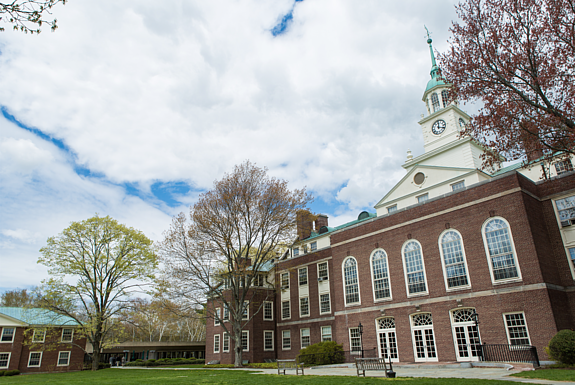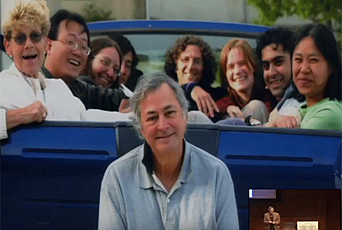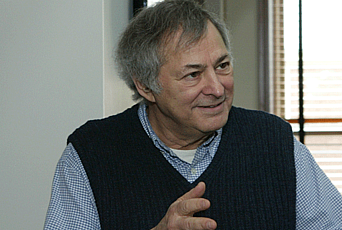Institute for Advanced Study Scholars Develop First Mathematical Model For Predicting Patient Response to Immunotherapy
Press Contact

Institute for Advanced Study scholars and collaborators have created the first mathematical model to predict how a cancer patient will respond to immunotherapy, according to a study published in Nature.
In recent years, novel therapies for treating cancer by immunotherapy have emerged. Although these therapies have fundamentally increased survival in many malignancies, scientists are trying to better understand the nature of immune interactions and identify basic properties of tumors that lead to successful responses in patients.
Marta Łuksza, Ph.D., Janssen Fellow at the Simons Center for Systems Biology at the Institute for Advanced Study; Benjamin Greenbaum, Ph.D., Assistant Professor at the Icahn School of Medicine at Mount Sinai and former Member in the Simons Center for Systems Biology; and Arnold Levine, Ph.D., Professor Emeritus at the Institute for Advanced Study, led the study, in collaboration with researchers from Memorial Sloan Kettering Cancer Center and Columbia University. The study presents a new mathematical model of the biological processes during the evolution of a tumor under pressure from the immune system. The model, which was tested on patients with melanoma and lung cancer, is able to predict how a tumor will evolve under immunotherapy.
“We attempted to model how the immune system recognizes a tumor and how that affects a tumor’s evolution under therapy, in simple mathematical terms,” said Łuksza of the study. “Currently, in limited available datasets, we are able to predict which patients are likely to have a positive outcome to therapy. By capturing the most fundamental properties, we also gain valuable insight into paths for improving current treatments.”
Łuksza and colleagues studied checkpoint-blockade immunotherapies, a type of cancer treatment designed to enable a patient’s immune system to recognize and destroy tumor cells. The process of recognition is complex as an immune cell has to recognize and distinguish tumor cells from healthy cells. The recognition is possible because tumors cells, unlike healthy cells, contain novel genetic mutations. Such mutations create tumor neoantigens, which are molecules potentially visible to immune cells of the patient. However, it is not fully understood which mutations give rise to neoantigens that actually lead to strong interactions with the immune system. Because tumors constantly evolve and acquire new mutations, cells can have different genomes and potentially different immune interactions.
To predict the likely evolution of a tumor subjected to therapy, Łuksza and colleagues combined concepts and methods from immunology, evolutionary biology, physics, and computer science. At the core of their model is a new insight in which mutations in a tumor cell lead to better recognition by immune cells enabling the patient to fight the tumor in an efficient way.
The model also reveals that cancers under therapy evolve in a similar way to rapidly adapting pathogens, such as the influenza virus. Overall, this approach can help to identify new therapeutic targets within the immune system and to design vaccines for patients who do not typically respond to immunotherapy.
Łuksza and Greenbaum also collaborated in a second study published in Nature, which was conducted by researchers led by Vinod P. Balachandran, M.D., Taha Merghoub, Ph.D., and Steven D. Leach, M.D., at Memorial Sloan Kettering. That study demonstrates how a similar model of cancer-immune interactions can be used to describe and predict long-term survivors of pancreatic cancers controlled by the immune system. Together, these two studies elucidate the variables that are important in understanding how the immune system recognizes and destroys a tumor.
These studies have roots in grants issued by Stand Up to Cancer for convergence research, which have brought together teams of scientists, clinicians, physicists, and computer scientists to approach cancer research in novel ways. The grants were planned in a unique set of meetings at the Institute for Advanced Study held in February 2015.
To learn more about the work of the Simons Center for Systems Biology at the Institute for Advanced Study please visit, https://www.ias.edu/sns/csb.


